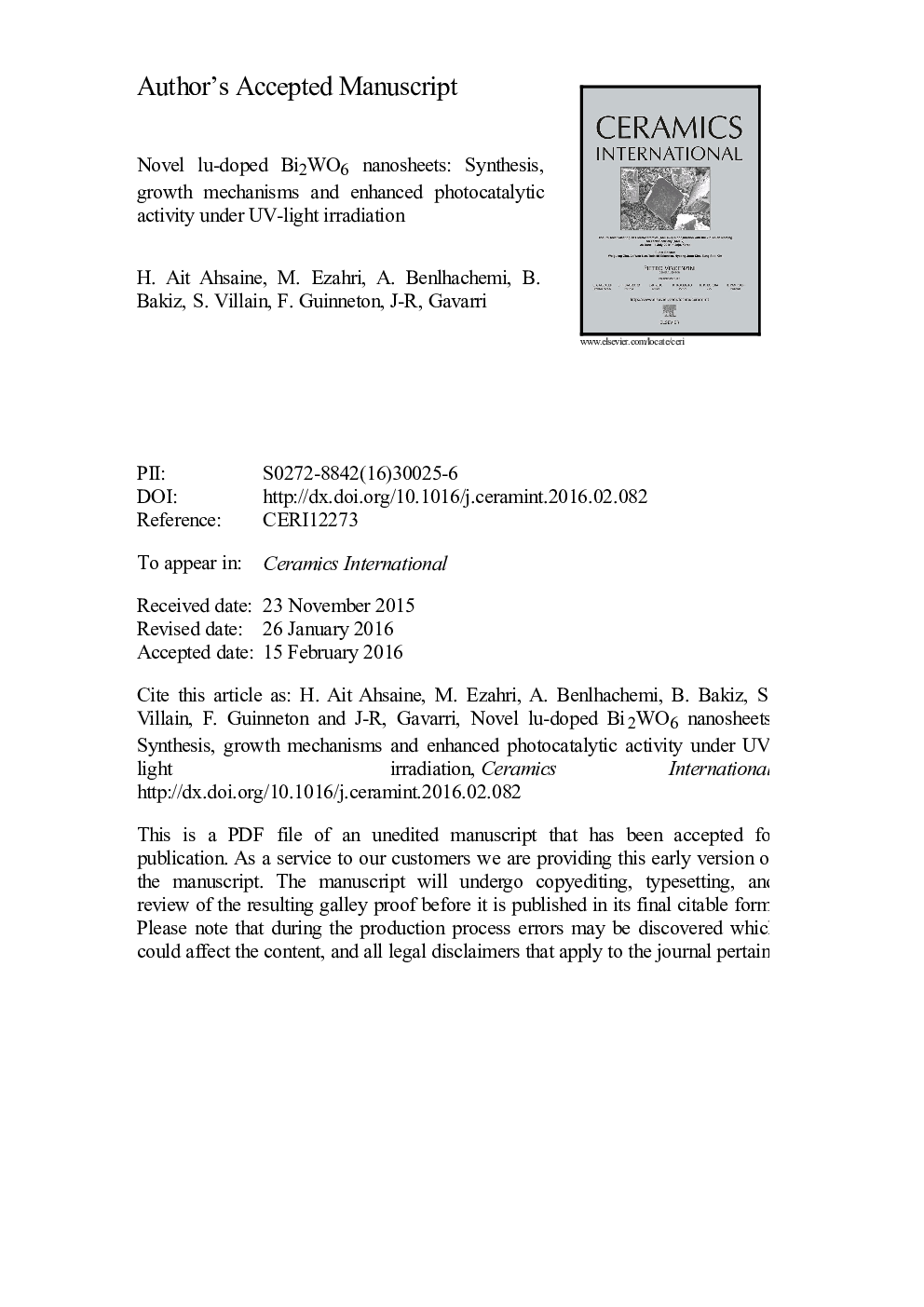| Article ID | Journal | Published Year | Pages | File Type |
|---|---|---|---|---|
| 10624210 | Ceramics International | 2016 | 19 Pages |
Abstract
Polycrystalline systems of lutetium doped bismuth tungstates Bi2WO6: Lu (Lu at% 0, 2, 5 and 8) were synthesized using the coprecipitation method, followed by thermal treatment at 500 °C. The Bi2WO6:Lu samples were characterized by X-Ray diffraction (XRD), scanning electron microscopy (SEM), energy-dispersive X-Ray analysis (EDS) and UV-vis diffuse reflectance spectra (DRS). The XRD and SEM analyses showed that the as-prepared samples crystallized in the same orthorhombic structure and consist of agglomerated nanosheets. To characterize the photocatalytic activities, UV-visible spectrometry was used to analyze the evolution of Rhodamine B photodegradation in presence of the Bi2WO6: Lu photocatalysts. The characteristic absorption band of Rhodamine B at 554 nm shifted to lower wavelengths under UV irradiation. The pure Bi2WO6 and the 5% Lu doped Bi2WO6 photocatalysts presented the lowest and highest efficiencies, respectively. An interpretation of improved photocatalytic efficiencies was proposed.
Keywords
rHbFWHMJCPDSDRSBi2WO6electron–holeEDSCrystallite sizeconduction bandBismuth tungstateEnergy-dispersive X-ray analysisRhodamine BThicknessfull width at half maximumPhotodegradationPhotocatalytic activitySEMScanning electron microscopyNanosheetsNanostructuresCell parametersXRDX-ray diffractionDensityJoint Committee on Powder Diffraction Standardsvalence band
Related Topics
Physical Sciences and Engineering
Materials Science
Ceramics and Composites
Authors
H. Ait Ahsaine, M. Ezahri, A. Benlhachemi, B. Bakiz, S. Villain, F. Guinneton, J.-R. Gavarri,
